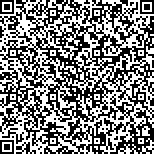| 本文已被:浏览 670次 下载 837次 |

码上扫一扫! |
|
|
| 基于实验和网络药理学探讨丹知青娥方改善下尿路症状的作用和分子机制 |
|
杨晓华1,2,3, 刘二伟1,2, 马亚宣1,3, 吴垚锌1,2, 苗琳1,2,3
|
|
1.天津中医药大学中医药研究院, 天津 301617;2.天津中医药大学组分中药国家重点实验室, 天津 301617;3.天津中医药大学方剂学教育部重点实验室, 天津 301617
|
|
| 摘要: |
| [目的] 明确丹知青娥方(DZQE)是否具有调节膀胱功能改善男性下尿路症状(LUTS)的潜在作用,并预测可能的靶点和通路。[方法] 用膀胱灌流法检测DZQE对正常雄性Wistar大鼠排尿参数的影响;分离正常大鼠膀胱逼尿肌肌条,用肌条张力实验检测DZQE对膀胱逼尿肌舒缩的调节作用;在中药系统药理学数据库与分析平台(TCMSP)和中医百科全书(ETCM)筛选DZQE中的活性成分和靶点信息;通过GeneCards和DisGeNET数据库获取LUTS疾病靶点;筛选DZQE与LUTS的共同作用靶点,并归属其蛋白质类型;通过Cytoscape_v3.7.1软件构建中药-活性成分-作用靶点网络;通过富集分析数据库(DAVID)v6.8对相关靶点进行基因本体论(GO)分析和京都基因与基因组百科全书通路富集分析(KEGG)信号通路富集分析。[结果] DZQE能够降低雄鼠膀胱漏尿点压(DLPP)和最大排尿压(MVP);促进大鼠膀胱逼尿肌收缩,同时抑制氯化钾(KCl)诱导的肌条过度收缩,呈现双向调节效应。筛选得到DZQE中102个活性成分,共对应258个药物潜在靶点,LUTS疾病靶点246个,其中共同作用靶点47个,DZQE可能作用于LUTS的活性成分59个;GO富集分析涉及平滑肌收缩、血管收缩、丝裂原活化蛋白激酶(MAPK)级联、雌激素应答等生物过程;KEGG分析后得到包括磷脂酰肌醇3-激酶(PI3K)/蛋白激酶B(AKt)、甲状腺激素、钙离子、雌激素、肿瘤坏死因子(TNF)、ErbB、MAPK、转化生长因子β(TGF-β)信号通路等88条信号通路。[结论] DZQE可以通过多条信号通路调节膀胱平滑肌舒缩,改善雄鼠下尿路症状。 |
| 关键词: 丹知青娥方 下尿路症状 逼尿肌 排尿参数 网络药理学 |
| DOI:10.11656/j.issn.1673-9043.2023.03.10 |
| 分类号:R285.5 |
| 基金项目:天津市教委科研计划重点项目(2018ZD01);国家自然科学基金面上项目(82074105)。 |
|
| Study on the effect and mechanism of Danzhi Qing’e Formula in improving lower urinary tract symptoms based on experiment and network pharmacology |
|
YANG Xiaohua1,2,3, LIU Erwei1,2, MA Yaxuan1,3, WU Yaoxin1,2, MIAO Lin1,2,3
|
|
1.Institute of Traditional Chinese Medicine of Tianjin University of Traditional Chinese Medicine, Tianjin 301617, China;2.State Key Laboratory of Component Chinese Medicine of Tianjin University of Traditional Chinese Medicine, Tianjin 301617, China;3.Key Laboratory of Pharmacology of Traditional Chinese Medical Formula of Ministry of Education of Tianjin University of Traditional Chinese Medicine, Tianjin 301617, China
|
| Abstract: |
| [Objective] To determine whether Danzhi Qing'e Formula(DZQE) has a potential role in regulating bladder function in the treatment of male lower urinary tract symptoms(LUTS),and to predict the possible mechanism involved. [Methods] The bladder perfusion was used to detect the effect of DZQE on urinary parameters in male rats. The rat detrusor strips were isolated and the relaxable and contractile effects of DZQE on basal and KCl-induced detrusor strips were detected. The active ingredients and their potential targets in DZQE were identified from traditional chinese medicine systems pharmacology database and analysis platform(TCMSP) and the encyclopedia of traditional chinese medicine(ETCM). The LUTS related disease targets were obtained from database GeneCards and DisGeNET. Then target overlaps between of active ingredients from DZQE and of disease were confirmed and the active components-targets network was conducted. The signaling pathway and biological function were subsequently analyzed by Gene Ontology(GO) and Kyoto Encyclopedia of Genes and Genomes(KEGG) through the database for annotation,visualization and integrated discovery(DAVID) v6.8. [Results] DZQE significantly reduced the detrusor leak point pressure(DLPP) and maximum voiding pressure(MVP) in male rats. Strip assays showed that DZQE directly promoted bladder detrusor contraction,but inhibited KCl-induced detrusor contraction. By network pharmacological screening,102 active components and 258 potential predictive targets of DZQE were obtained,and 246 targets of LUTS disease were set,which were further overlapped and 47 common targets with 59 active components of LUTS in the formula were finally confirmed. GO functional enrichment analysis showed that the main biological processes of DZQE on regulation of LUTS involved smooth muscle contraction,vasoconstriction,MAPK cascade,and estrogen response. KEGG enrichment result showed that DZQE regulated LUTS through 88 signaling pathways,including PI3K-Akt,thyroid hormone,calcium ion,estrogen,TNF,ErbB,MAPK,TGF-β signaling pathway. [Conclusion] DZQE regulated the symptoms of lower urinary tract in male rats through multiple signaling pathways. |
| Key words: Danzhi Qing’e Formula lower urinary tract symptom detrusor micturition parameter network pharmacology |
